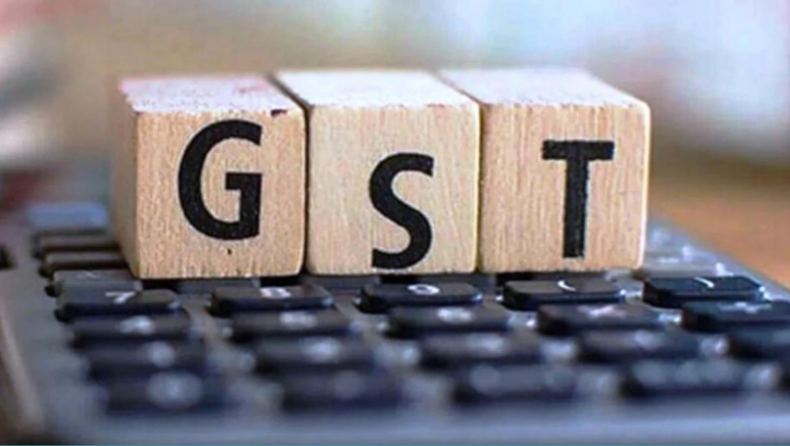The Goods and Services Tax, or GST. In India, it is an indirect tax that has mostly superseded other indirect taxes, including excise duty, VAT, and service tax. The Goods and Service Tax Act was approved by Parliament on March 29, 2017, and it became effective on July 1 of that same year.
The trend for goods and services tax (GST) revenue collection has been over Rs. 1.4 lakh crore for the last six months in a row, but it hasn’t consistently surpassed Rs. 1.5 lakh crore. On Wednesday, Revenue Secretary Tarun Bajaj stated that he anticipates October’s GST revenue to surpass the Rs 1.5 billion threshold.
The trend for GST revenue collection over the last six months has been over Rs 1.4 lakh crore, but it hasn’t consistently surpassed the Rs 1.5 lakh crore threshold yet.
While increasing 28% year over year, August’s revenue of Rs 1.43 lakh crore was less than July’s of Rs 1.49 lakh crore. Once the total had reached Rs 1.5 lakh crore, a record amount of Rs 1.67 lakh crore was mopped in April 2022.

Speaking at a CBIC event last evening, Bajaj stated, “For the past few months, we’ve been working extremely hard to accomplish that milestone of Rs 1.5 trillion” (lakh crore). However, we have occasionally fallen short by Rs 2,000 crore or even Rs 6,000 crore.
CBIC Chairman Vivek Johri said the Mumbai zone of the CBIC is the largest in the nation with four sub-zones manned by 41 commissioners. The event was presided over by Finance Minister Nirmala Sitharaman and her junior minister Pankaj Chaudhary, and she gave the keys to an apartment complex to CGST officers and staff there.
“I am confident that starting on November 1, the CBIC would consistently generate Rs 1.5 trillion in revenue for the government,” the Union secretary stated in reference to the revenue that will be collected in October.
CBIC Chairman Vivek Johri said the Mumbai zone of the CBIC is the largest in the nation with four sub-zones manned by 41 commissioners. The event was presided over by Finance Minister Nirmala Sitharaman and her junior minister Pankaj Chaudhary, and she gave the keys to an apartment complex to CGST officers and staff there.
Due to increased demand and inflation, higher rates, and more compliance, GST collections increased by 28% in August to Rs 1.43 lakh crore, remaining above Rs 1.4 lakh crore for the sixth consecutive month. The mop-up in the prior quarter was Rs 1,12,020 crore.
Finance Minister on GST
The finance ministry stated in a statement that “better reporting along with economic recovery will have a favorable influence on GST collections on a constant basis.”
This emphasized the significance of the financial capital by stating that the Mumbai zone contributes 18% of CGST and 25% of customs tax collections, as well as contributing 7% of the national GDP.
According to the ministry, the gross GST collection for the month was made up of Rs 24,710 crore for CGST, Rs 30,951 crore for SGST, Rs 77,782 crore for IGST (including Rs 42,067 crore for goods imported), and Rs 10,168 crore for cess (including Rs 1,018 crore for goods imported).
The Modi administration’s primary goal in implementing this tax structure was to simplify India’s convoluted indirect tax system. Our indirect tax system was as complicated as a math problem prior to GST. Due to the fact that there were several taxes, both central and state-specific. Examples include the center’s excise tax, extra tax, CVD, SAD, service tax surcharges, and cess level. And the state taxes, which include VAT, purchase taxes, central sales taxes, etc. So, on July 1, 2017, all of these taxes were abolished and combined into the GST. Therefore, the government centralized our tax system’s current federal form with the introduction of the GST.
For the sixth consecutive month, GST collections exceeded the Rs 1.4 lakh crore barrier, jumping 28% in August to Rs 1.43 lakh crore thanks to higher rates, rising demand and inflation, and more compliance. The mop-up in the prior quarter was Rs 1,12,020 crore.
The finance ministry stated in a statement that “better reporting along with economic recovery will have a favorable influence on GST collections on a constant basis.”
According to the ministry, the gross GST collection for the month was made up of Rs 24,710 crore for CGST, Rs 30,951 crore for SGST, Rs 77,782 crore for IGST (including Rs 42,067 crore for goods imported), and Rs 10,168 crore for cess (including Rs 1,018 crore for goods imported).












